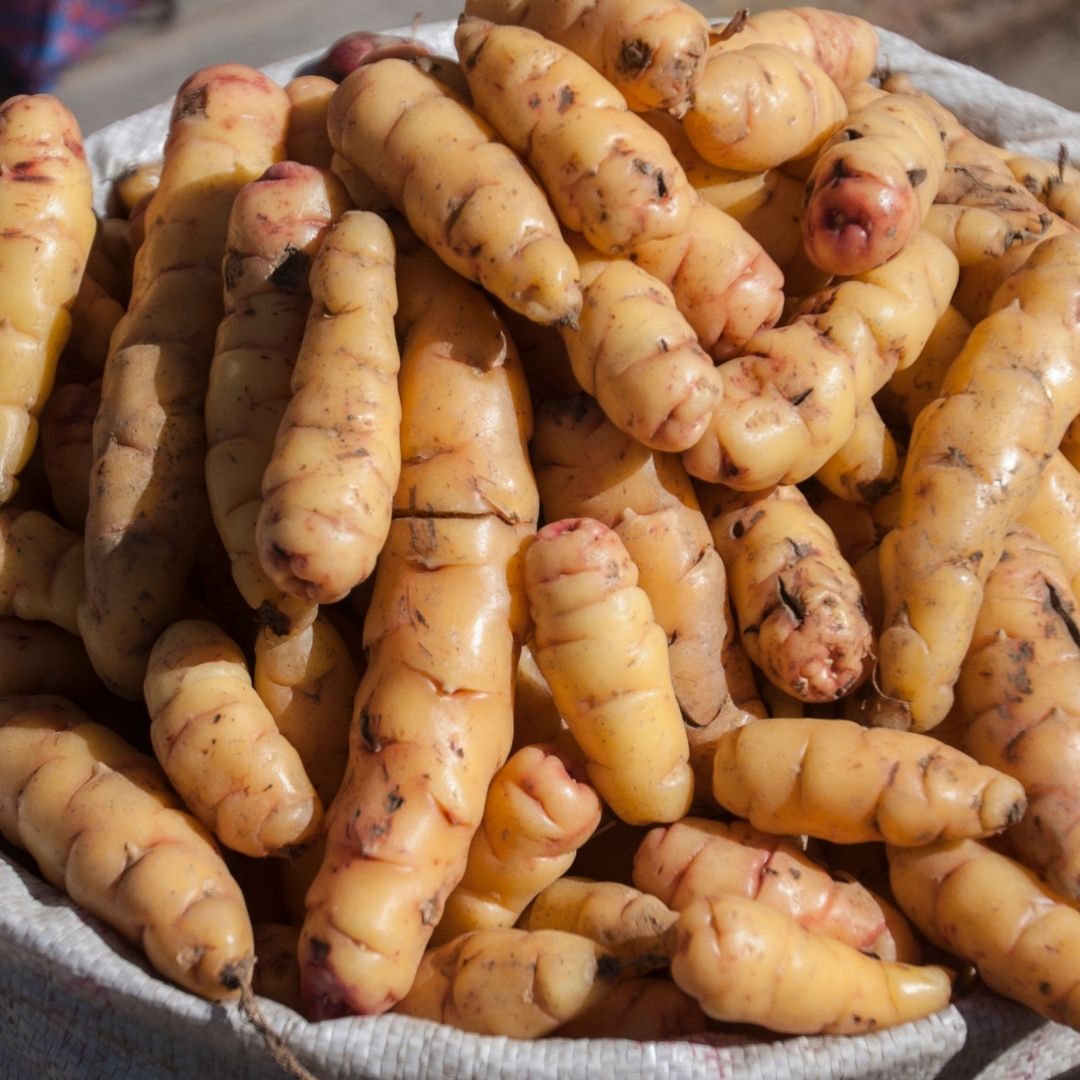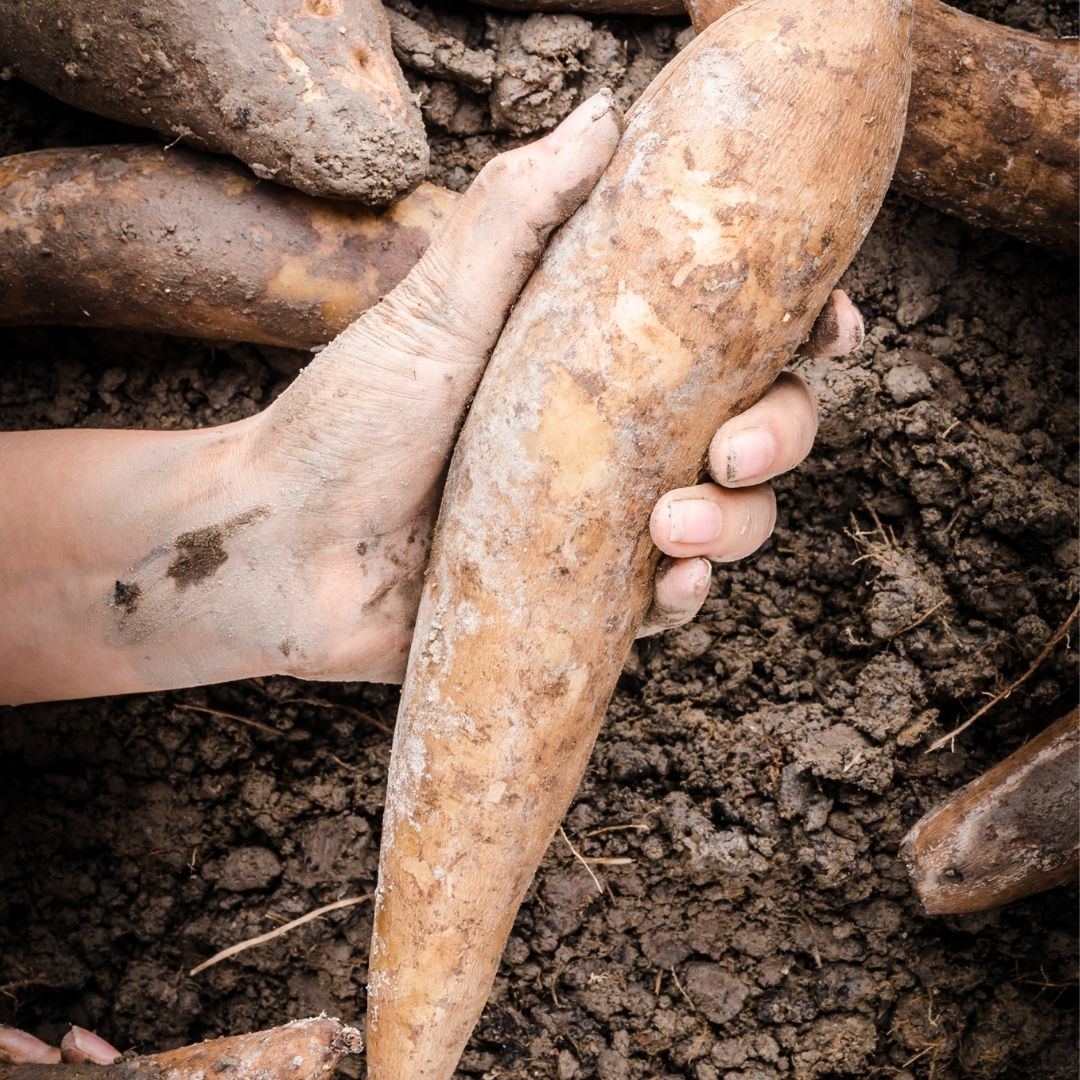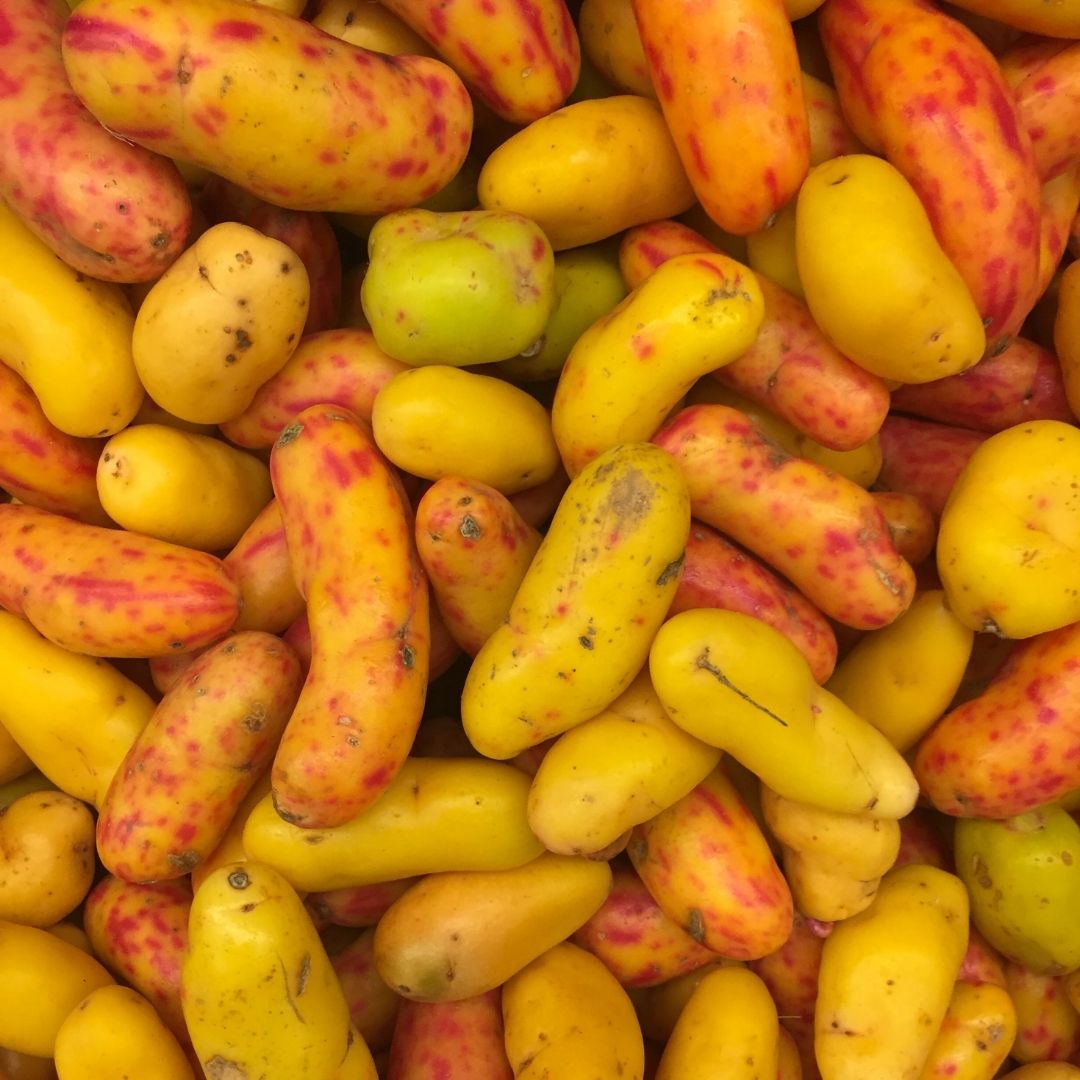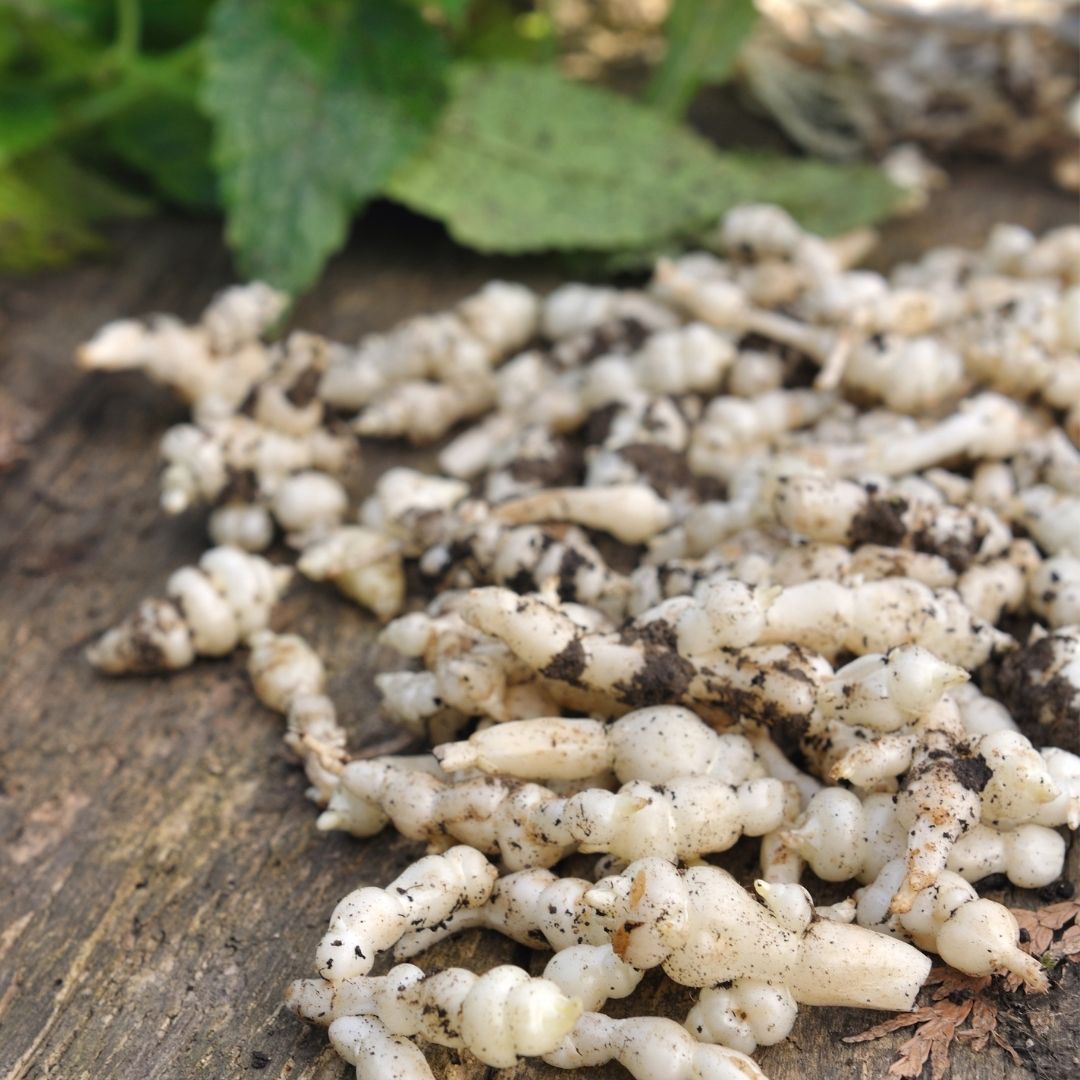Home » No Spuds!

No Spuds!
-
That’s right for the first time since the redevelopment of Airfield Estate there will be no potatoes grown on-site this season. This stable food of the Irish diet has been dropped from our growing plans to be replaced by some interesting higher value tubers.
The soil association in the UK currently prices a standard organic potato at an average cost of €1.15 per kg. This a low return, especially considering the costs of growing potatoes is on the rise with seed potato prices having increased by 16.6% since last year. This all adds up to make the cultivation of potatoes on a small scale pretty unattractive.
A key to successful market gardening is focusing on higher value crops which provide a good return on small areas of land. To this end we have instead turned our attention to alternative tuber crops that yield a better price and also add a point of interest on a dinner plate. As with the potato many of these crops originate in South America and it is the underground tuber that we eat. One advantage these crops have over potatoes is that they are relatively pest and disease free making them ideally suited for organic cultivation.
We have been growing several varieties of Oca (Oxalis tuberosa) for many years now. It is a perennial plant but is frost sensitive, so when we harvest its tubers in late November we store the best of them for planting the following spring. The tubers come in a range of colours and can be boiled, fried, steamed or roasted. A good source of carbohydrates, phosphorus and iron these tubers not only look and taste great but are nutritious to match. A relatively low maintenance crop, the key to a good yield is mounding up around developing stems and ultimately waiting until the foliage has completely died back before harvesting. An added bonus of this crop is its leaves and stems are also edible.
Yacon (Smallanthus sonchifolius) is another tuber we have been growing for many seasons. Unlike oca which could be used as a direct substitute for potatoes, yacon produces a crispy tuber with a fresh taste not dissimilar to a pear. It is versatile in its use and can be stir fried, baked or boiled. It can even just be diced and added straight to a salad. The chefs in Overends Kitchen prefer to create a sweet syrup from it which has multiple uses. Containing high levels of inulin it is said to be a good food for diabetics while it also can greatly improve gut health. Tubers are often best started in pots before being planted out when risk of frost has passed similar to the way you might grow a dahlia.
Two less common tubers which we have only started to grow in the past year are Ullucus and Chinese artichokes. Ullucus tuberosus was once the second most important root crop of the Andean region with only potatoes being valued higher. It is however relatively unknown in Ireland although it does grow quite well here. Its foliage can be used as a spinach substitute, but it is the colourful tubers that we predominately grow this plant for. Packed with protein, carbohydrates and vitamin C the small tubers can be added to soups and stews or to salads. The tubers look almost alien in their colourings and resemble something from a sweet shop. Unlike Oca and potatoes which benefit from mounding up around their stems Ullucus do not require such work making it a very low maintenance crop.
Another relatively new introduction to the gardens is Stachys affinis aka Chinese artichokes. There will be no prizes given for guessing where these originate from. A member of the mint family these grub-like tubers spread quite rapidly in the first season of cultivation. They are said to have a nutty taste and can be prepared in a similar way to Jerusalem artichokes. They are however just a fraction of the size of Jerusalem artichokes and ultimately, we will have to grow them for a few more seasons to see if they justify their presence in the garden.
Another positive note common amongst all the afore mentioned tubers is that there is still time to plant them. Many of them resent frost and therefore are best planted from mid-April onwards. Fruithill Farm and Gardens for Life are two Irish suppliers should you wish to grow them.





